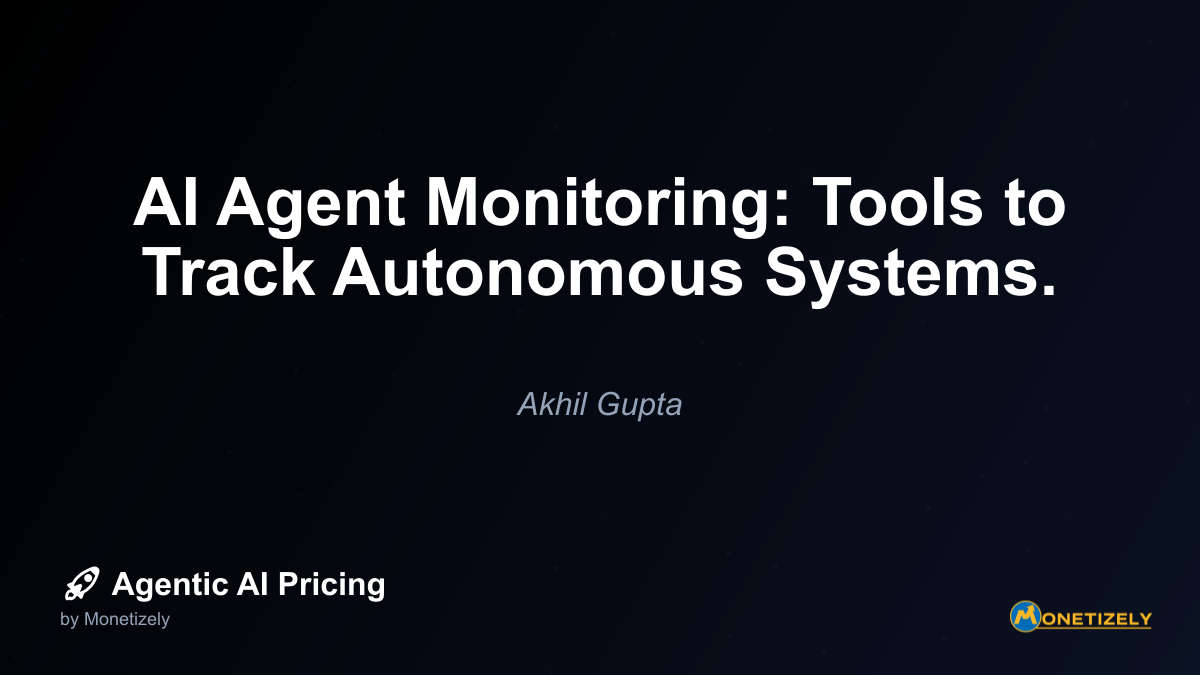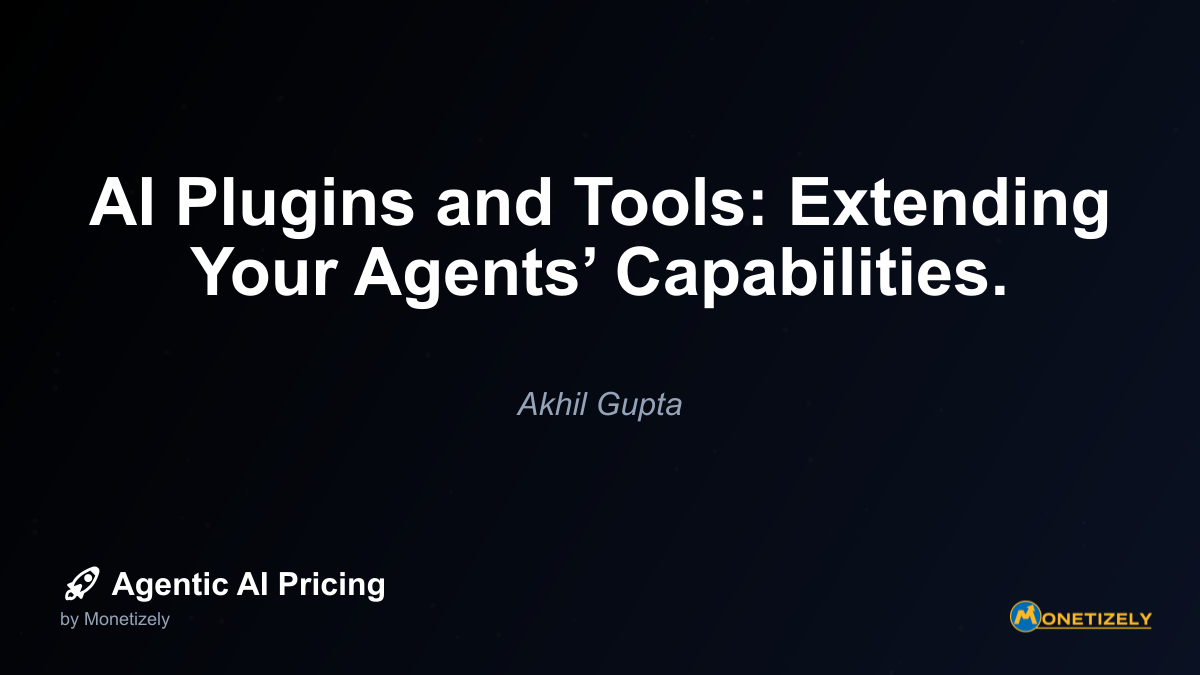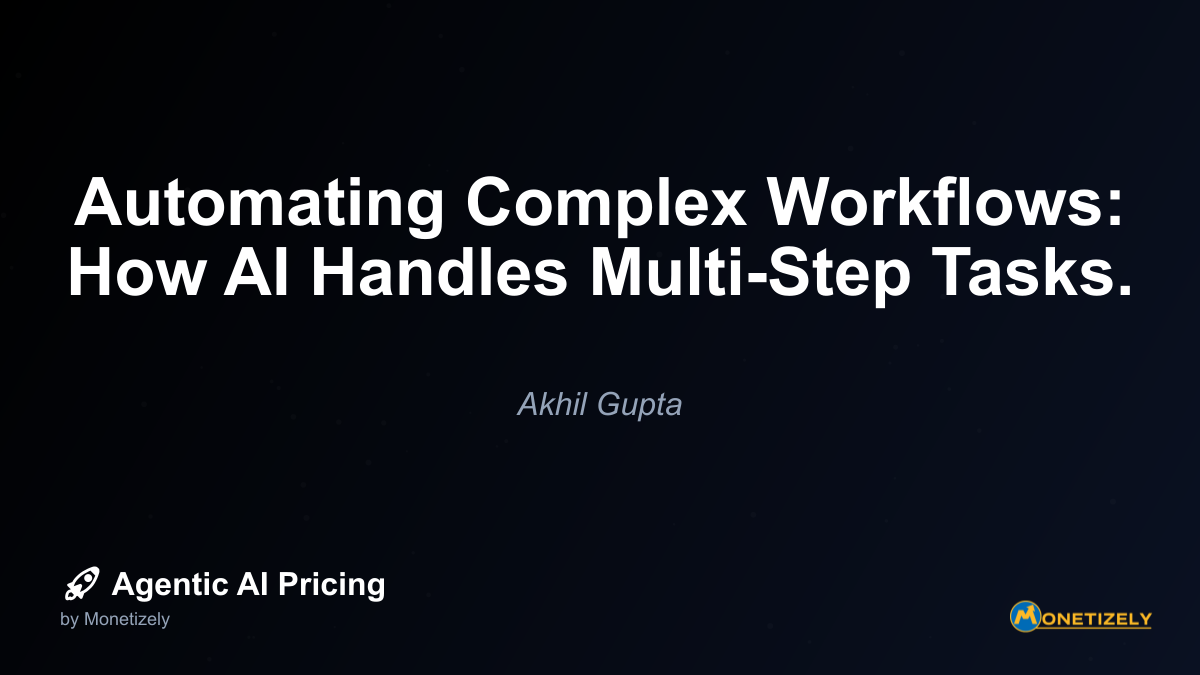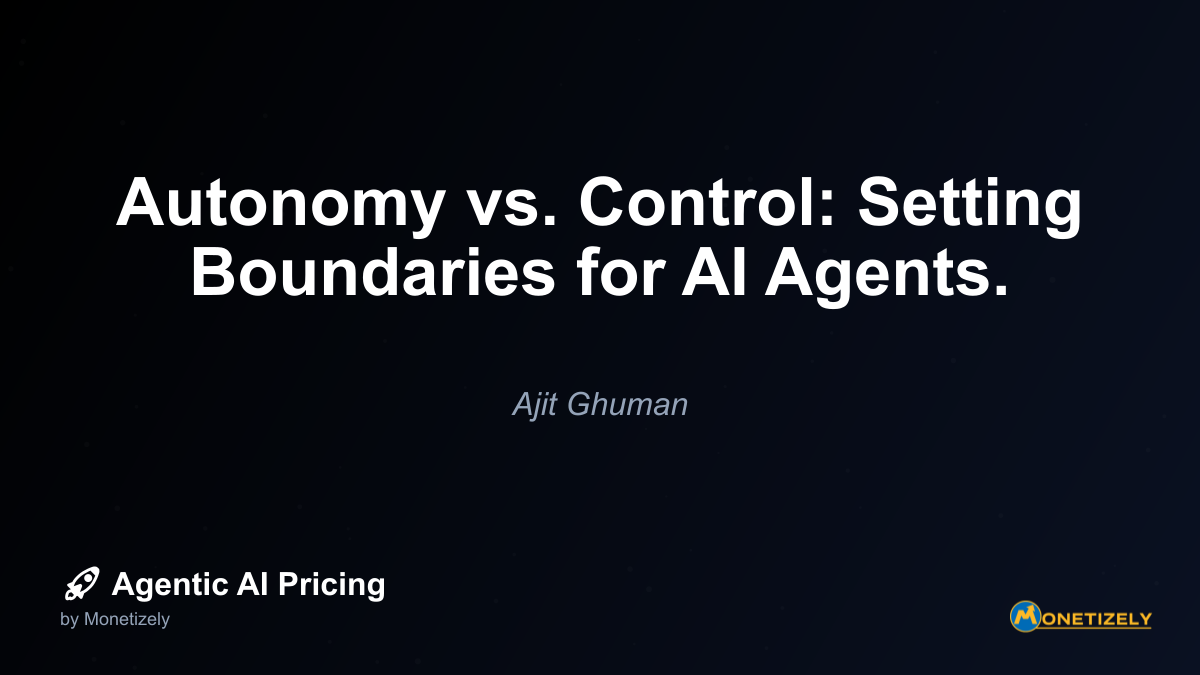· Akhil Gupta · Technical Insights · 7 min read
Explainable AI: Understanding AI Decisions in Business.
AI and SaaS Pricing Masterclass
Learn the art of strategic pricing directly from industry experts. Our comprehensive course provides frameworks and methodologies for optimizing your pricing strategy in the evolving AI landscape. Earn a professional certification that can be imported directly to your LinkedIn profile.
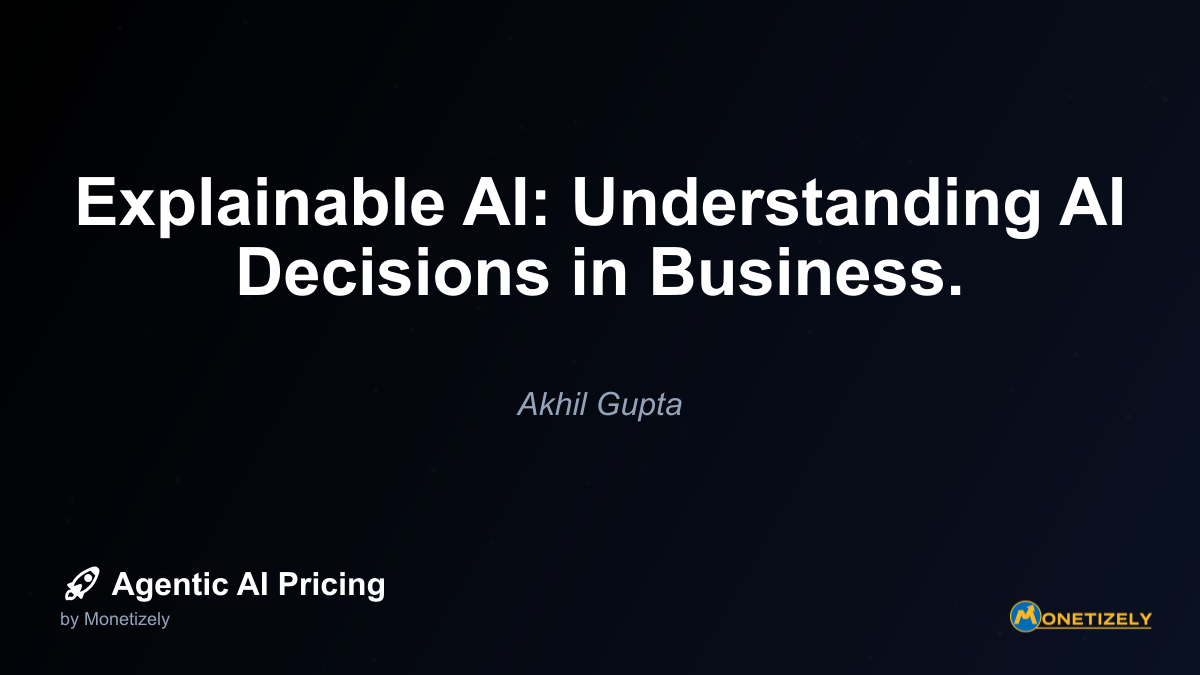
The Business Value of Explainable AI
While regulatory compliance often drives initial interest in explainable AI, forward-thinking organizations recognize that transparency delivers broader business value beyond meeting minimum requirements.
Building Stakeholder Trust
In business contexts where AI systems influence significant decisions, explainability builds trust with key stakeholders:
- Customers are more likely to accept AI-driven decisions when they understand the reasoning
- Business partners gain confidence in automated processes when they can verify alignment with shared objectives
- Employees more readily adopt AI tools when they understand how these tools support their work
- Investors increasingly evaluate AI governance, including explainability, as part of due diligence
Accelerating AI Adoption
Explainability can significantly accelerate organizational AI adoption by addressing common barriers:
- Reducing resistance to change: When stakeholders understand how AI systems make decisions, they’re less likely to view these systems as threatening or arbitrary
- Facilitating collaboration: Transparent AI enables more productive collaboration between technical teams and business users
- Enabling effective oversight: Management can more confidently delegate authority to AI systems when they understand the decision parameters
- Supporting incremental deployment: Explainable models allow organizations to start with high-transparency, lower-risk applications before advancing to more complex implementations
Improving AI Quality
Beyond external benefits, explainability improves the quality of AI systems themselves:
- Identifying hidden biases: Transparent models make it easier to detect and address unintended biases in training data or model structure
- Debugging model errors: When AI systems make mistakes, explainability tools help pinpoint the source of the problem
- Aligning with business goals: Clear visibility into decision factors enables better alignment between technical optimization metrics and business objectives
- Enabling continuous improvement: Transparent feedback loops accelerate model refinement and adaptation
The Explainability-Performance Tradeoff
A persistent challenge in explainable AI is balancing transparency with performance. Traditional wisdom suggests an inherent tradeoff: the most accurate models (like deep neural networks) are the least explainable, while the most transparent models (like decision trees) sacrifice predictive power.
This tradeoff creates difficult decisions for business leaders deploying AI systems. Should they prioritize maximum accuracy, even if the resulting system functions as an inscrutable black box? Or should they accept lower performance to gain transparency?
Recent advances suggest this tradeoff may be less stark than previously thought:
- Hybrid approaches combine high-performance black-box models with explainable components that interpret their outputs
- Neurosymbolic AI integrates neural networks with symbolic reasoning to create systems that are both powerful and interpretable
- Explainability-aware training incorporates transparency objectives directly into the model development process
- Domain-specific architectures leverage industry knowledge to create models that are both high-performing and aligned with domain experts’ understanding
For business leaders, addressing this tradeoff requires careful consideration of the specific context. In some applications—like personalized content recommendations—slight performance advantages may justify reduced explainability. In others—like healthcare diagnostics or lending decisions—transparency may take precedence even at some cost to raw accuracy.
The Cost and Pricing Implications of Explainable AI
Implementing explainable AI involves both technical and business considerations, with significant implications for cost structures and pricing strategies.
Development and Implementation Costs
Organizations should anticipate several cost categories when implementing explainable AI:
- Technical infrastructure: Explainability often requires additional computational resources for generating and storing explanations
- Development time: Creating explainable models typically demands more extensive design and validation processes
- Documentation: Comprehensive explanation frameworks require thorough documentation of model behavior
- Training: Both technical teams and business users need training to effectively create and interpret explanations
- Ongoing maintenance: Explanation systems require regular updating as models evolve and business needs change
For vendors offering AI solutions, these costs influence pricing models. Explainable AI products typically command premium pricing compared to black-box alternatives, reflecting both the additional development costs and the enhanced business value of transparency.
As our research on transparent model pricing premiums shows, businesses are increasingly willing to pay this premium, recognizing that explainability delivers value beyond raw predictive performance.
Value-Based Pricing for Explainable AI
For organizations developing explainable AI solutions, value-based pricing strategies align pricing with the business benefits delivered:
- Risk reduction value: Price based on the reduced regulatory, reputational, and operational risks enabled by transparent AI
- Adoption acceleration value: Quantify the faster time-to-value achieved through improved stakeholder acceptance
- Decision confidence value: Price according to the improved decision quality enabled by understanding AI recommendations
- Competitive differentiation: Position explainability as a premium feature that distinguishes offerings from black-box alternatives
Implementing an Explainable AI Strategy
Organizations seeking to implement explainable AI should follow a structured approach:
1. Conduct an Explainability Needs Assessment
Begin by evaluating where explainability matters most in your AI ecosystem:
- Risk mapping: Identify which AI applications pose the greatest regulatory, reputational, or operational risks if unexplained
- Stakeholder analysis: Determine which user groups require explanations and what type of explanations they need
- Technical inventory: Assess your current AI systems’ explainability capabilities and limitations
- Regulatory review: Identify specific explainability requirements in your industry and jurisdictions
2. Develop Explainability Standards and Guidelines
Create organizational standards that ensure consistent approaches to AI transparency:
- Explanation types: Define which explanation methods (feature importance, counterfactuals, etc.) are appropriate for different applications
- Documentation requirements: Establish standards for documenting model behavior and decision factors
- Quality metrics: Define how to measure the effectiveness of explanations for different stakeholders
- Review processes: Create procedures for validating that explanations accurately reflect model behavior
3. Build Technical Capabilities
Develop the technical infrastructure needed to support explainable AI:
- Tool selection: Evaluate and select appropriate XAI libraries and frameworks
- Integration architecture: Design how explanation systems will integrate with existing AI infrastructure
- Visualization capabilities: Implement effective ways to present explanations to different stakeholders
- Monitoring systems: Create mechanisms to track explanation quality and usage
4. Train Teams and Stakeholders
Ensure all relevant parties can effectively work with explainable AI:
- Data scientists: Train technical teams on explainable model development and explanation techniques
- Business users: Help decision-makers understand how to interpret and apply AI explanations
- Compliance teams: Educate compliance personnel on how explanations support regulatory requirements
- Customer-facing staff: Prepare customer service teams to communicate AI decisions when needed
5. Implement Governance Processes
Establish ongoing governance to maintain explainability standards:
- Explanation reviews: Regularly validate that explanations accurately reflect model behavior
- Documentation audits: Ensure comprehensive documentation of model decisions and explanations
- Feedback loops: Collect and act on stakeholder feedback about explanation clarity and usefulness
- Continuous improvement: Regularly update explanation methods based on emerging best practices
Future Trends in Explainable AI
The field of explainable AI continues to evolve rapidly. Business leaders should monitor several emerging trends:
Personalized Explanations
Rather than one-size-fits-all explanations, next-generation XAI systems will adapt explanations to the specific needs and knowledge levels of different stakeholders:
- Expertise-aware explanations that adjust technical depth based on the user’s domain knowledge
- Context-sensitive explanations that focus on factors most relevant to the current business situation
- Interactive explanations that allow users to explore different aspects of AI decisions based on their interests
Causal Explanations
Moving beyond correlation-based explanations, causal models will help business users understand not just what factors influenced a decision but why those relationships exist:
- Counterfactual reasoning that explores how different conditions would change outcomes
- Causal inference techniques that distinguish genuine causal relationships from mere correlations
- Intervention-based explanations that demonstrate how specific actions affect outcomes
Multimodal Explanations
As AI systems process increasingly diverse data types, explanation methods will evolve to handle this complexity:
- Visual explanations for image and video processing systems
- Natural language explanations for text-based models
- Integrated explanations that connect insights across different data modalities
Standardization and Regulation
As explainable AI matures, expect increasing standardization and regulatory guidance:
- Industry standards for explanation formats and quality metrics
- Regulatory frameworks specifying minimum explainability requirements for high-risk applications
- Certification programs validating the quality and accuracy of explanation systems
Conclusion
Explainable AI represents more than a technical solution to the black-box problem—it’s a strategic business capability that enables responsible AI adoption while delivering tangible value. As AI systems take on increasingly consequential roles in business decision-making, the ability to understand and communicate their reasoning becomes essential for building trust, ensuring compliance, and managing risk.
Organizations that treat explainability as a core requirement rather than an optional add-on position themselves for more sustainable AI adoption. By investing in the technical infrastructure, governance processes, and stakeholder education needed for effective XAI implementation, these companies create a foundation for responsible AI that aligns with both business objectives and societal expectations.
As the field continues to evolve, the most successful organizations will find ways to balance the sometimes competing demands of model performance and transparency. Rather than viewing explainability as a constraint on AI capabilities, forward-thinking leaders recognize it as an enabler of responsible innovation—allowing their organizations to harness AI’s transformative potential while maintaining human understanding and oversight of critical decisions.
By embracing explainable AI as a business strategy rather than merely a technical approach, organizations can build AI systems that don’t just deliver answers but build the trust and understanding needed for sustainable AI adoption in complex business environments.
Co-Founder & COO
Akhil is an Engineering leader with over 16+ years of experience in building, managing and scaling web-scale, high throughput enterprise applications and teams. He has worked with and led technology teams at FabAlley, BuildSupply and Healthians. He is a graduate from Delhi College of Engineering and UC Berkeley certified CTO.
Pricing Strategy Audit
Let our experts analyze your current pricing strategy and identify opportunities for improvement. Our data-driven assessment will help you unlock untapped revenue potential and optimize your AI pricing approach.

